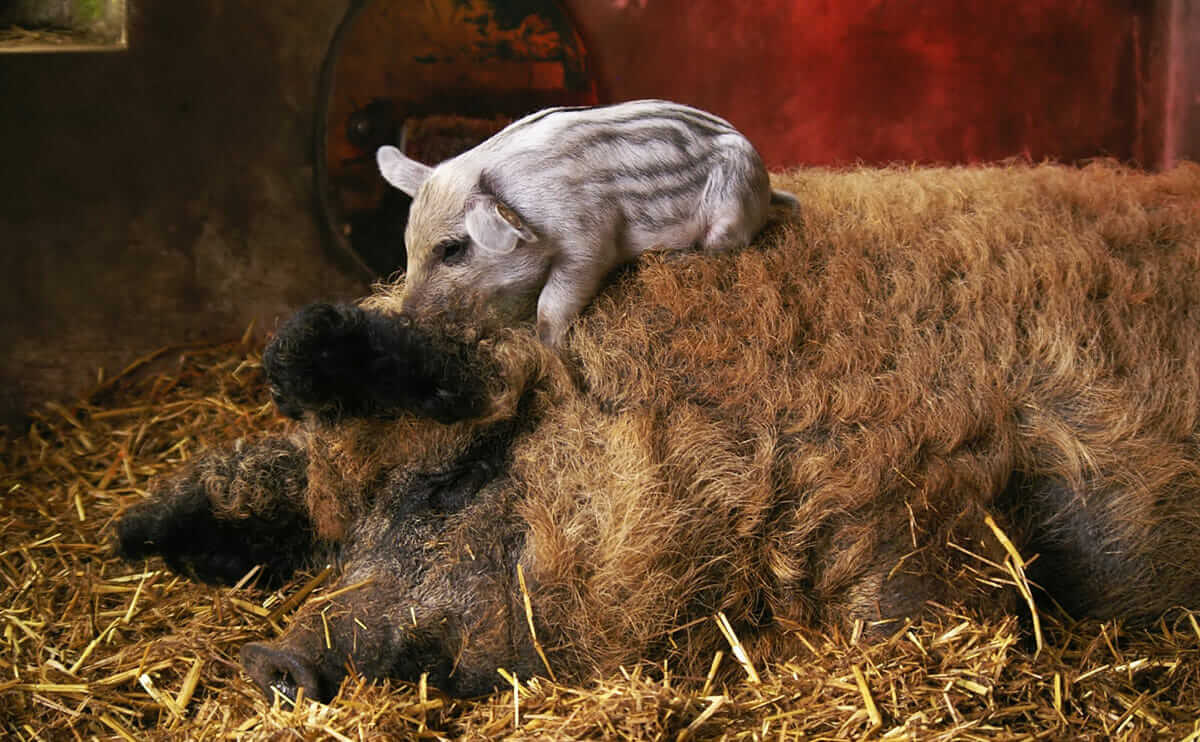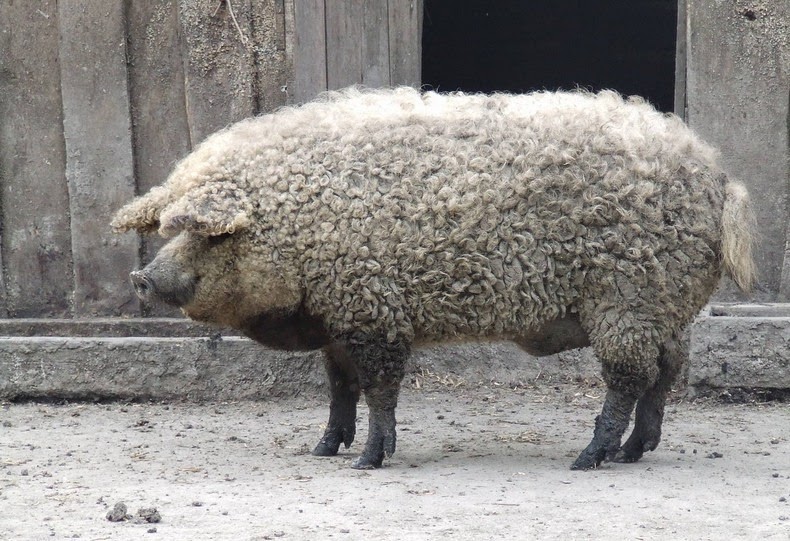The Mangalica pig is the only porcine species native to Hungary.

It is a breed that has its origins in the crossing of the primitive Sumadija race (of the Mediterranean branch to which the Iberian pig also belongs) with the Szalonta and Bakony races (typical semi-wild breeds from the Carpathians).
The most remarkable characteristic of Mangalica is that its whole body is covered with abundant thick blonde hair and thus it is known colloquially as “the pig-sheep”.

In winter, their hair is long like fleece, thick and curly, while, in spring, the hair acquires a blond, shiny and stiff appearance. In summer the fur is thinner and smoother. There is only evidence of one other porcine race with hair that long: the extinct Lincolnshire Curly-Coated Pig.

The distinguishing feature of Mangalica is its fat, as its name indicates, since, in Hungarian, Mangalica or Mangalitsa means “pork with a lot of fat”. Besides being extremely fatty, they are very pastoral and resistant to some diseases.

This pig lives three times longer than normal breeds, and during this time, it forms a very high proportion of fat in the bacon under its skin. Then this fat delicately infiltrates all the flesh and gives it a beautiful and delicious mottling. Their fatty meat also makes them ideal for the production of cured ham, being particularly suitable for drying and slow and prolonged maturation, obtaining a gourmet product with a very special flavor.

Its carcass has half the meat and twice as much fat as a white pig, which causes the meat and sausages produced with this race to retain their properties longer and their flavor to concentrate more as it can mature for a long time. This is why it is common to compare Iberian ham with Mangalica ham, although it has its own well-differentiated organoleptic qualities.